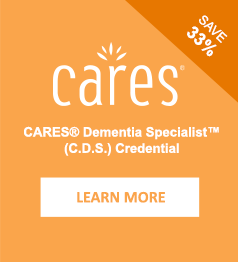Blogs
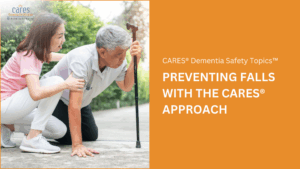
Minimizing Falls with the CARES® Approach
The risk of falling is one of the greatest concerns for older adults, especially those living with dementia. A fall can lead to serious injury,
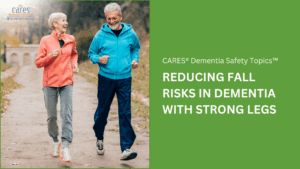
Strong Legs, Stronger Lives: Preventing Falls in People with Dementia
Falls remain one of the biggest risks for older adults, particularly those living with dementia. In an attempt to keep loved ones safe, caregivers often
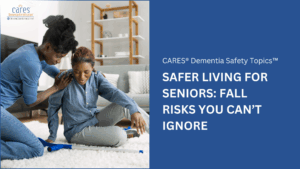
From Clutter to Medications: Hidden Causes of Falls in Seniors
Falls are one of the leading causes of injury among older adults, and when it comes to dementia and fall risks, the chances are even
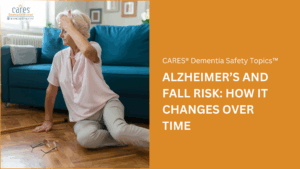
Falling at Various Stages of Alzheimer’s Disease
As Alzheimer’s disease progresses, the risk of falling changes dramatically. While aging alone makes falls more likely, dementia adds unique challenges that evolve with each
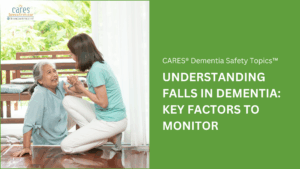
From Observation to Action: Falls Assessments in Dementia Care
Falls are a major concern for people living with dementia. Because changes in memory, perception, mobility, and overall health increase fall risks, it is vital
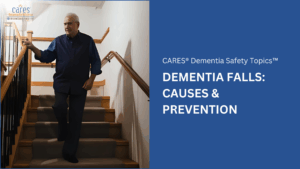
Falls in Dementia: The Role of the Environment and Familiarity
Falls are one of the most common and concerning risks for people living with dementia. While occasional falls may happen to anyone, in dementia care

Understanding Age-Related Changes That Increase Fall Risk
Falls are one of the leading causes of injury in older adults—and they’re not just “accidents.” As we age, our bodies go through changes that,
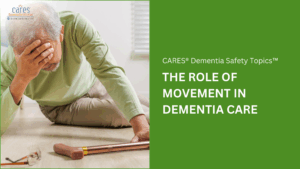
How We Walk: Why Understanding Movement Matters in Dementia Care
We know that something as simple as walking can become a daily challenge for individuals living with dementia. While many of us take walking for
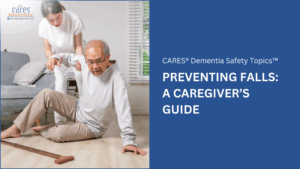
Understanding and Minimizing Falls: A Safety Guide for Caregivers
Falls are among the most common and serious safety concerns in elder care and assisted living settings. Understanding what qualifies as a fall—and how to
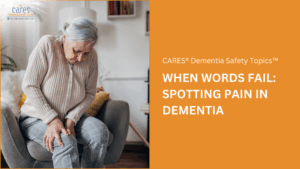
Understanding and Easing Pain in People with Dementia
Pain is a deeply personal experience, and for people living with dementia, it can be especially challenging to communicate. As caregivers, loved ones, or healthcare
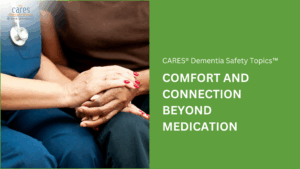
Non-Drug Treatments for Comfort and Connection
In dementia, not all pain relief needs to come from medication; it can also be eased through everyday activities. These approaches are often called non-drug
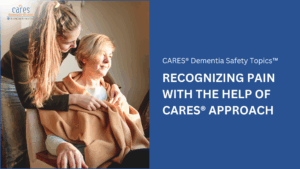
Understanding Pain with the CARES® Approach
The CARES® Approach is a helpful guide for every interaction with someone living with dementia. It helps caregivers understand behaviors, respond to nonverbal cues, and
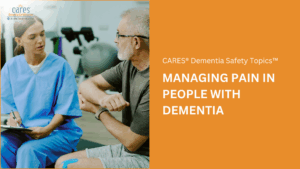
When Dementia Masks Pain: What to Know
When caring for someone with dementia, recognizing pain is not always straightforward. People with dementia may struggle to communicate clearly—especially about discomfort or pain. They
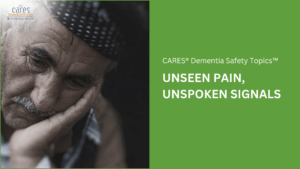
How Does Pain Affect Behavior in People with Dementia?
When caring for someone with dementia, it’s easy to focus on managing behaviors—especially when those behaviors are difficult, confusing, or distressing. But what if the
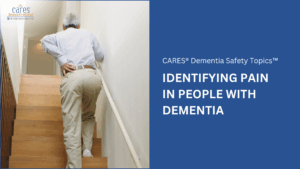
Understanding Untreated Pain in People with Dementia
Pain is a deeply personal and often invisible experience. For individuals with dementia, this invisibility can become even more profound—leading to pain that goes unnoticed,
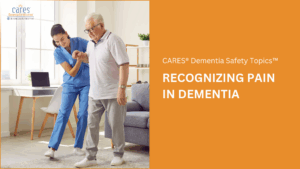
Recognizing Pain in People with Dementia
When someone has dementia, recognizing their discomfort or pain isn’t always straightforward. They may not be able to say, “I’m in pain,” especially as the
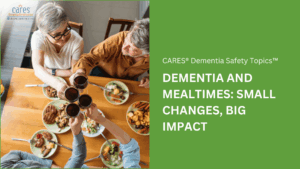
Making Mealtimes Meaningful for People with Dementia: Simple Changes, Big Differences
Mealtimes can be a comforting part of the day for people living with dementia—if done thoughtfully. A calm, inviting environment combined with respectful assistance and
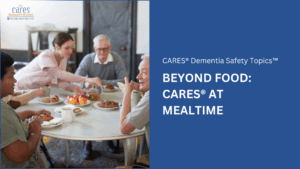
More Than a Meal: The CARES® Approach to Mealtimes
When caring for someone with dementia, mealtimes can often feel like a challenge. But with the CARES® Approach, we are reminded that eating and drinking

Share With Others (Mealtime Edition)- The fifth step in CARES® Approach
This is the final step in the CARES® Approach—and one that truly shapes the mealtime experience. Sharing with others about what happens during meals is
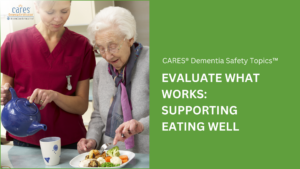
Evaluate What Works During mealtime: The fourth step in CARES® Approach
In dementia care, it’s not just about offering support—it’s about offering the right support. That’s why the fourth step in the CARES® Approach, “E –

Respond Appropriately During Mealtime: The third step in CARES® Approach
When caring for someone with dementia, helping them eat well is more than just offering food—it’s about understanding behavior around food, their needs and responding
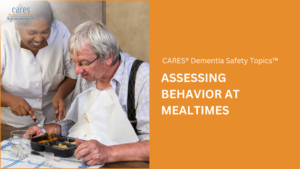
Assessing Behavior at Mealtimes: The Second Step in the CARES® Approach
Mealtimes can be a source of comfort and connection—but for people living with dementia, they can also become moments of confusion or distress. That’s why
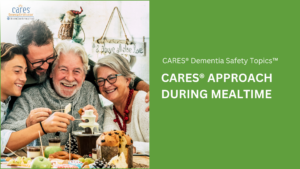
Connect with the Person During mealtime – The First Step in CARES® Approach
For people living with dementia, mealtime should be more than just nourishment—it should be an opportunity to connect, engage, and feel comforted. The CARES® Approach
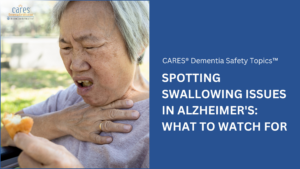
Recognizing the Warning Signs of a Swallowing Problem in Alzheimer’s Disease
Swallowing is a function we often take for granted. Yet, for individuals living with Alzheimer’s disease, this seemingly simple task can become increasingly difficult as
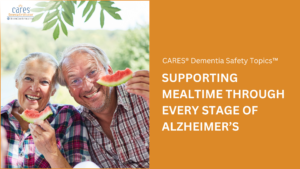
Eating Abilities at Various Stages of Alzheimer’s Disease
Eating is a deeply personal and social activity, often tied to comfort, identity, and daily routine. For individuals living with Alzheimer’s disease, the ability to
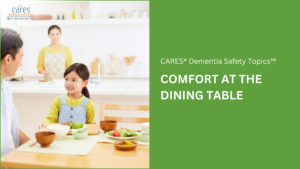
Routines, Habits, and Challenges: Supporting Mealtimes for People with Dementia
When caring for someone with dementia, understanding their personal habits—especially around food—can make mealtimes much smoother and more meaningful. Every person has their own routines
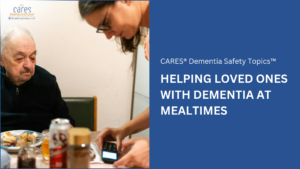
Helping Loved Ones with Dementia at Mealtimes
Mealtime is more than just eating—it’s a time to connect, feel comfort, and stay independent. For people living with dementia, eating can sometimes become a
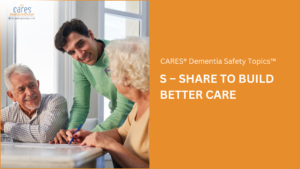
S – Sharing with Others Helps Build Better Care Together
S – Share With Others This is the last step in the CARES® Approach. Sharing with others in dementia care is very important. It helps

E – Evaluate What Works to Bring Comfort and Connection
E – Evaluate What Works The fourth step in the CARES® Approach encourages us to gently reflect on what truly helps in a caregiving moment.
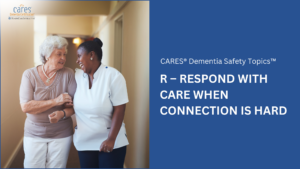
R – Respond with Care When Connection Is Hard
R – Responding with Care This step in the CARES® Approach is all about using what you know and what you’ve noticed to respond in
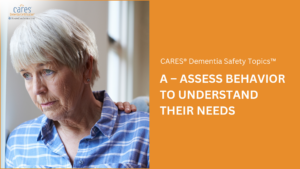
A – Assess Behavior to Find the Meaning Behind the Changes You See
A – Assess Behavior The second step of the CARES® Approach is to gently assess behavior. When someone is no longer able to speak or

C – Connecting with the person
C – Connect with the Person “Connect with the person” is the first step in the CARES® Approach to dementia care. To truly connect with
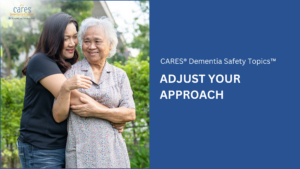
Adjust Your Approach
When interacting with someone who has Alzheimer’s disease or a related form of dementia, it’s essential to focus on their abilities—not just their limitations. Every
